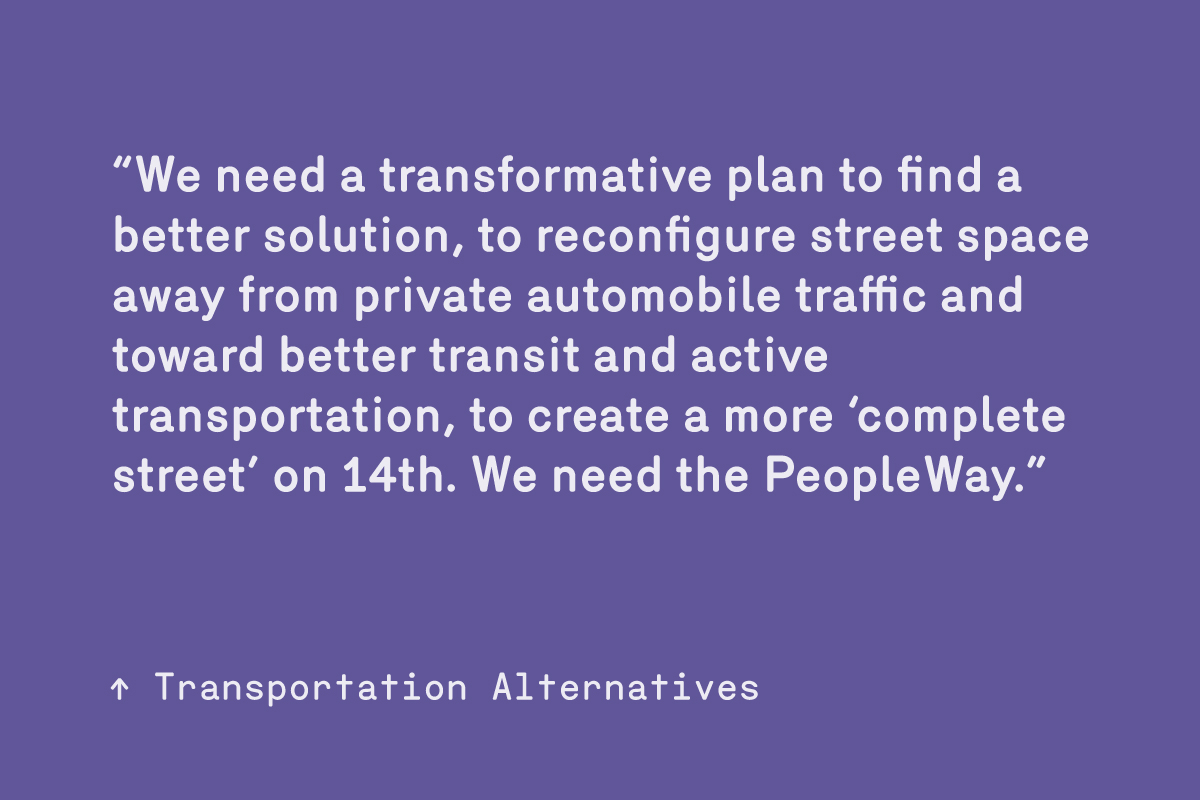
On an average weekday, the L train serves 50,000 people in Manhattan alone while 200,000 more use it to cross the East River. However, beginning in 2019, these riders will have to find alternatives, as repairs to the Canarsie Tunnel put the L out of service from Manhattan through its westernmost segment in Brooklyn. While many passengers will be able to take a detour via other routes, the thousands who need to travel along 14th street will be forced into already strained and slow transit options, or will turn to for-hire vehicles and private cars that will worsen the congestion in the area.
We need a transformative plan to find a better solution, to reconfigure street space away from private automobile traffic and toward better transit and active transportation, to create a more “complete street” on 14th. We need the PeopleWay.
When the L train shuts down, thousands will need an alternative to travel along 14th street. We propose the PeopleWay!
Imagine travelling down a new 14th Street: Bus Rapid Transit provides a fast and frequent bus service operating in dedicated lanes with no interference from other vehicles; new bus boarding islands in the center of the street ensure level, all-door boarding, improving access and service efficiency; private car traffic is prohibited, with provisions made for Access-A-Ride and off-hour deliveries; and wide, protected bike lanes and expanded sidewalks accommodate greater pedestrian volumes. Businesses along the corridor, which already see most of their customers arrive on foot or by public transit, will likely see improvements, and car traffic is not expected to increase significantly on nearby parallel streets.
Today, private cars only move around 1,600 people per hour along 14th Street. NACTO estimates that the PeopleWay’s on-street transit could manage 10,000 to 25,000, and our recommended pedestrian and cyclist facilities would add capacity for another 16,500 people per hour. What are we waiting for?
–